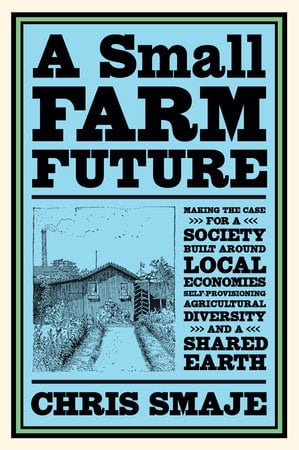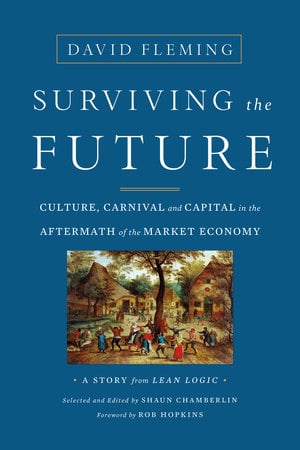How to Fall in Love with the Future
A Time Traveller’s Guide to Changing the World
There are an infinite number of possible futures that lie ahead of us—like threads stretching out into the distance. Rob Hopkins, cofounder of the international Transition Network movement, invites us to travel to future worlds we would actually want to live in.
“No one makes environmental optimism more credible or compelling than Rob Hopkins. Read this and don’t weep.”
—Hugh Fearnley-Whittingstall, chef and campaigner
In 2020, when the COVID-19 pandemic disrupted every aspect of daily life, climate activist and Transition Network cofounder Rob Hopkins responded the way a lot of people did: by starting a podcast. But it wasn’t any ordinary podcast. In each episode, Hopkins and his guests would “time travel” together to the year 2030—walking down imagined future streets, talking with imagined future neighbors, visiting imagined future local businesses. While Hopkins’s guests came from all walks of life—economists, politicians, bakers, comedians, novelists and more—they all shared a willingness to suspend their worries about the future long enough to mentally inhabit and then describe a world they were thrilled to be a part of.
What Hopkins discovered was no less profound: this simple exercise of visiting a positive future forced him to rethink the work he’d been doing as a climate activist for decades.
How to Fall in Love with the Future is the result of that radical disruption—and Hopkins’s deep dive into the people and movements throughout history who have used visions of the future to inspire positive change on a large and dramatic scale. From the life and writings of musician Sun Ra and the history of Black utopian movements to the latest neuroscience on what goes on in our minds—and hearts—when we “time travel,” Hopkins brings essential new thinking to anyone overwhelmed with dread and anxiety for the future. He asks us to consider: what would the world look like if we all got to work imagining—and then building—a world we were deeply in love with?
“Rob Hopkins is one of the world’s great optimists. He really believes that things can get better, and, when he’s around, they usually do. This book will lift your spirits and give you hope.”
—Brian Eno, musician, producer and artist
“Rob Hopkins puts imagination back at the heart of future-dreaming, offering us an irresistible invitation to dream bigger and then make those dreams a reality.”—Kate Raworth, author of Doughnut Economics







